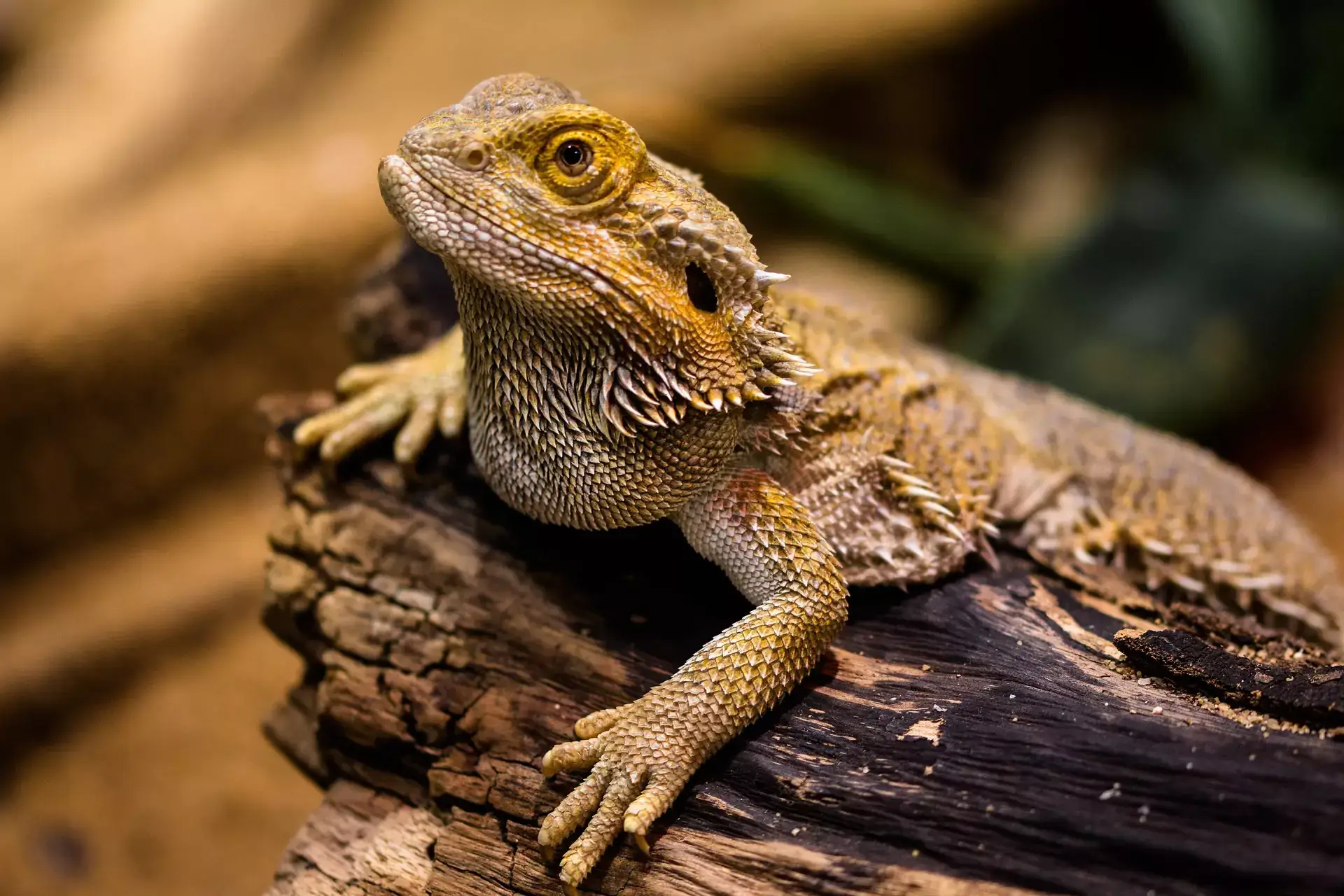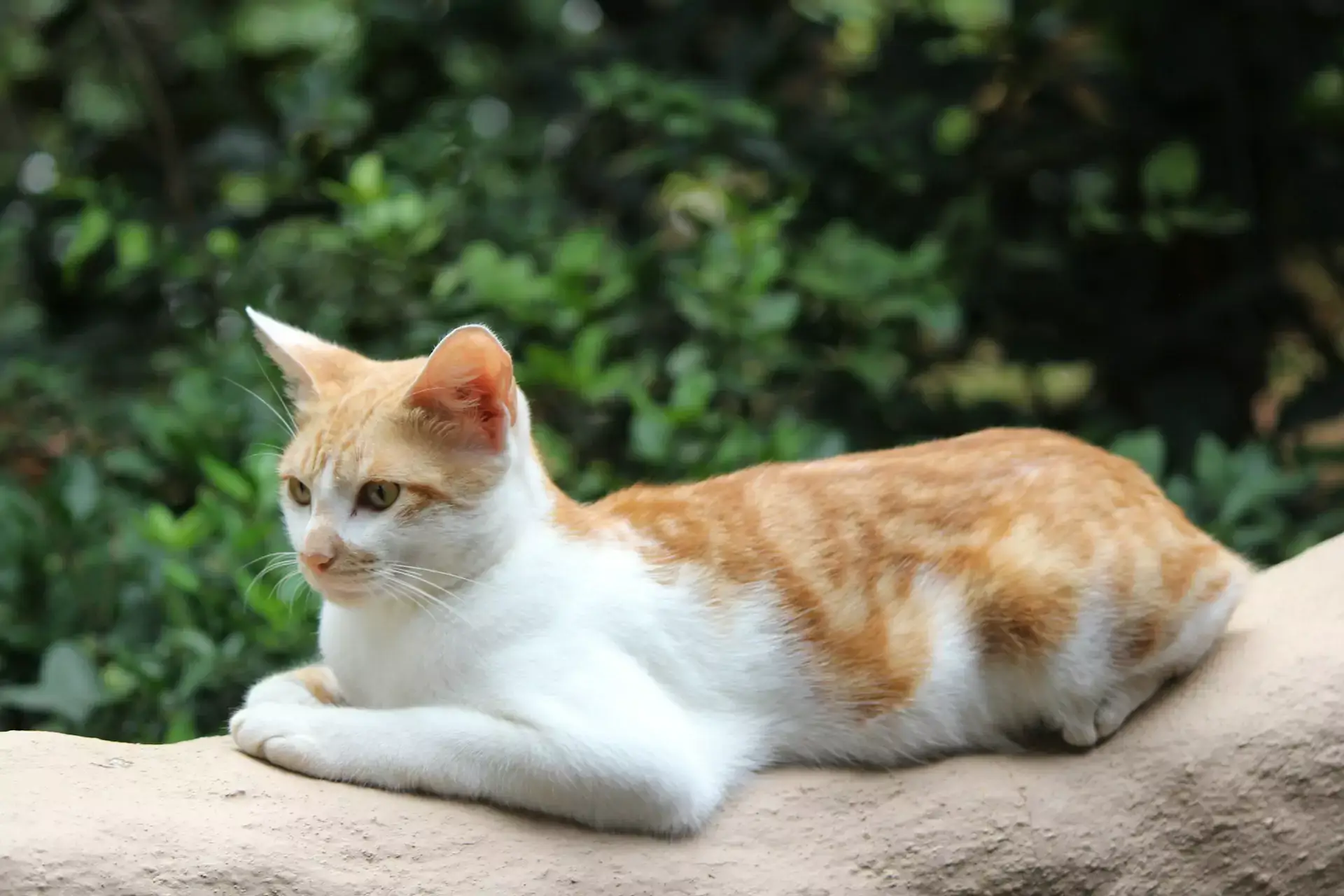Care for Bearded Dragons
Did you know that bearded dragons are now one of the most popular reptiles? These little dinosaurs are quite cute and charming. They have relatively low maintenance needs, which makes them an ideal choice for first-time reptile owners. Unlike many other reptiles, they do not grow excessively large; the average adult bearded dragon only measures around two feet in length, so you won’t need a spacious enclosure for them. And, although each beardie has their own unique personality, many are quite friendly. Some even display affection, which is atypical for most reptiles. Of course, these guys do have very specific needs. In this article, a local Louisville, KY vet goes over some of the basics of beardie care.
Basics of the Bearded Dragon
The bearded dragon is native to central Australia. Historically, most dragons are a sandy color, which helps them blend into their native environment. However, some are yellow or orange.
In general, beardies are quite popular because they are cute, gentle, friendly, and relatively easy to care for. Before adopting, you should note that owning a bearded dragon requires a significant time commitment: they can live for over ten years. However, some other reptiles have even longer lifespans. For instance, turtles can live up to 50 years. Think carefully before adopting one of these guys!
The Best Terrarium for Your Bearded Dragon
Your reptilian pal’s age will determine what size habitat they need. At the very least, a young beardie should be housed in a 20-gallon terrarium. However, these guys grow quickly. A 40-gallon habitat may be a better choice. An adult dragon will need at least 70 gallons of space.
We would recommend that you prioritize length and width over height when selecting a cage. When it comes to substrate, you can use newspaper, butcher paper, or reptile carpet. There are a few caveats here, though. If you’re using paper, remember to change it daily. Avoid using sand, especially for young dragons. Baby lizards can swallow the particles, which can then lead to intestinal blockages. Ask your vet for recommendations.
What Is The Proper Habitat Temperature for Bearded Dragons?
In terms of temperature, beardies have very specific requirements. The terrarium must be set up in a way that creates different temperature zones, or gradients. Reptiles regulate their internal temperature by moving between hot and cool areas and back. You should aim for 95 to 105 degrees Fahrenheit for the warmer end and 85 degrees for the cooler end. At night, the habitat can be a bit cooler. Ask your vet for specific advice.
It’s important to monitor these temperatures closely. You’ll need to check them several times a day. Get good thermometers! You may want to get one with a hygrometer so you can keep track of humidity as well.
What Accessories Do I Need For My Bearded Dragon?
When preparing your pet’s habitat, it is important to furnish it properly. A basking perch should be included to provide a spot for your pet to relax and enjoy the (artificial) sun. Sturdy objects such as driftwood, large rocks, or grape vines can be used for this purpose. Additionally, adding plants is a great idea, but be cautious of any that may be toxic if ingested by your beardie. Finally, don’t forget to include at least one hide for your pet’s comfort.
Choose shallow bowls for your pet’s meals. This is especially important for baby lizards, as they can drown in deep bowls. Place the bowls in the cooler end of the terrarium to avoid spoilage.
How Can You Tell If Your Beardie Is Sick?
When properly cared for, beardies are usually pretty hardy. However, you’ll need to keep a close eye out for signs of illness or injury.
Here are a few things to watch for:
- Unusual Movements Or Posture
- Trouble Walking
- Incomplete Sheds
- Weight/Composition Changes
- Lethargy
- Sunken Eyes
- Constipation
- Diarrhea
- Tail Kinks
- Hanging Jaw
- Discoloration
- Lesions
- Lack Of Appetite (Note: This Is Normal Just Before A Shed.)
- Respiratory Issues
- Strange Movements
- Limping
- Stiffness/Weakness
If you notice any of these things, reach out to your Louisville, KY vet right away.
Bearded Dragon Heat/Lighting Requirements
Bearded dragons need full-spectrum lighting to stay healthy. If they do not get enough UVB, they won’t be able to process calcium or Vitamin D properly. This can cause severe health problems, such as metabolic bone disease, or MBD, which is painful and debilitating.
Beardies get their UVB from sunlight. Your pet will live indoors, so you’ll need special bulbs. The lights should be set on a timed, 12-hour cycle, and young beardies might need stronger bulbs than adults. The bulbs should be at least a foot away from your dragon to prevent burns.
Remember to replace the bulbs regularly, as they may lose significant power before you notice anything. It’s a good idea to get a UV meter to measure humidity in the air. Aim for about 30 to 40 percent humidity.
Ask your Louisville, KY veterinarian for specific tips on choosing, setting up, and maintaining a bearded dragon habitat.
What Do Bearded Dragons Eat?
Your tiny dinosaur is an omnivore, and will eat both plants and insects. Bugs will make up the majority of your pet’s diet. However, the proportions and feeding schedules will change a bit over time. Young dragons need more insects to provide the protein their growing bodies need; adults can eat more produce than bugs.
Here are a few things to keep in mind:
Bugs: You can offer your dinosaur buddy crickets, hornworms, wasps, Dubia roaches, butterworms, elder bugs, or mealworms. Only offer store-bought or hand-raised insects. Wild bugs could be contaminated with pesticides and/or could carry parasites and diseases.
When offering insects, you’ll need to dust them with nutritional powder before they become lunch. Ask your veterinarian about supplements such as calcium, vitamin D, and multivitamins for beardies.
Veggies: Your reptilian friend can also eat lots of green leafy vegetables, like dandelion, mustard greens, collard greens, kale, and endive, as well as yellow, red, and orange vegetables, like bell peppers, carrots, and butternut squash.
Fruits: Fruits are sugary, so don’t go too crazy here. Strawberries, grapes, tomatoes, peaches, figs, dates, and apricots are good options.
Make sure both fruits and veggies are thoroughly washed before serving.
Flowers: Dandelions, roses, carnations, and geraniums are all fine for your beardie. However, not all flowers are safe, so do some research before giving them to your pet. Also, do not give your bearded dragon any flowers that have been treated with pesticides.
Water: Water is also crucial. In addition to having fresh drinking water, your little dinosaur will also benefit from regular soaks. Dehydration can be an issue with beardies, so stay on top of this!
Whenever you introduce a new food to your lizard, research it first to make sure it is safe. You should consult your vet regularly as your bearded dragon’s nutritional needs will change over time.
Conclusion: Bearded dragons are a popular pet reptile, and it’s evident why. They’re really cute and fun, and can even be cuddly and affectionate. However, they do have specific needs. Before adopting any animal, it’s important to talk to your veterinarian.
Contact us, your local Louisville, KY pet hospital, if you have any questions about caring for a bearded dragon. We’re here to help!



